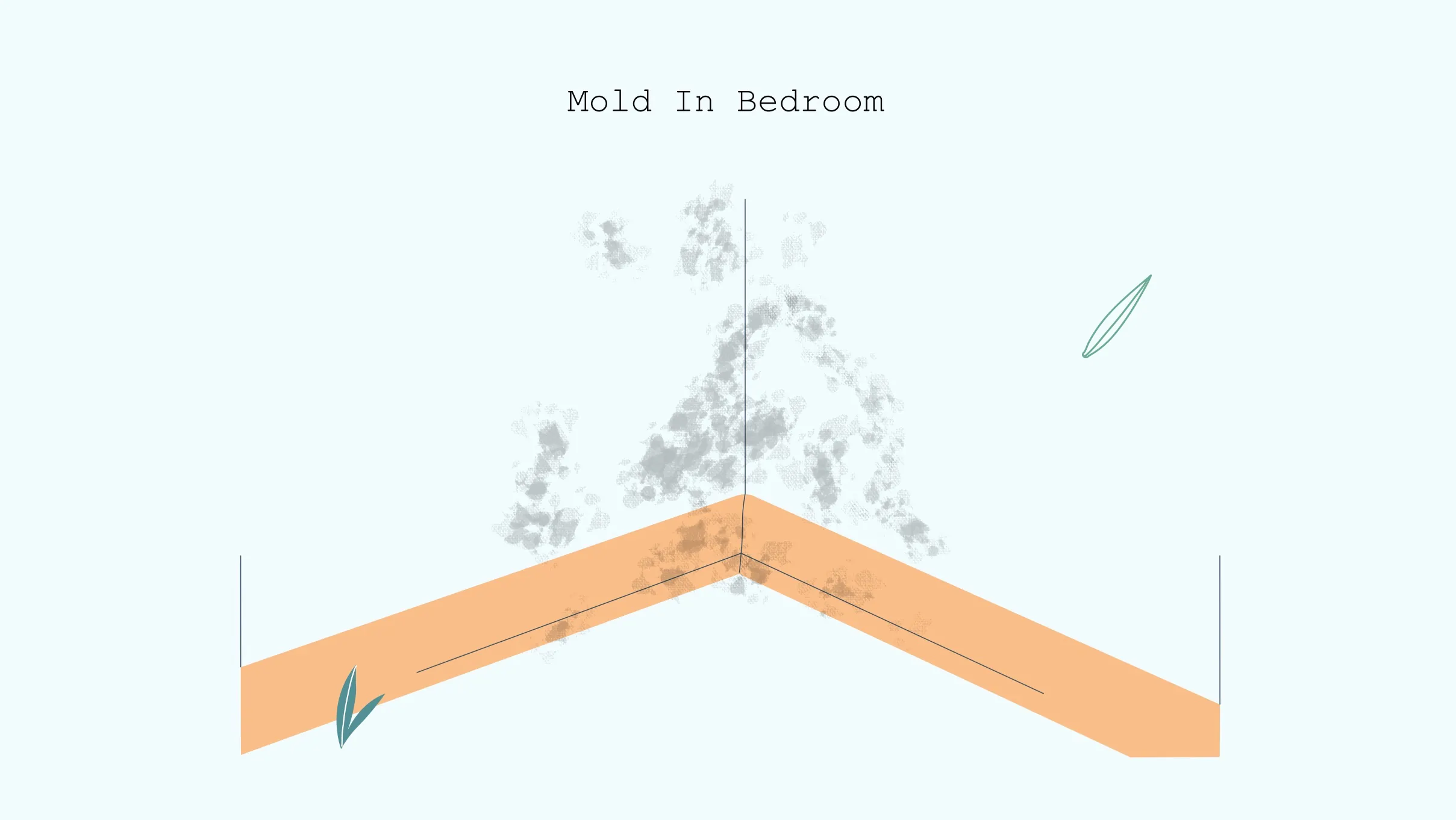How to Treat Mold in the Bedroom
Written by


As humans, we always opt for complex explanations instead of simpler ones. A real example of this is finding the cause behind Gupta Jee’s daughter’s respiratory issues. After all the exaggerated health complexities backed by countless relatives, neighbours, and friends, the doctor recognized the cause. Moulds and dampness caused respiratory issues in the child, making everyone surprised. The doctor clarified how moulds were detrimental to children and adults. That was followed by people questioning how to treat mould in the bedroom.
If you also wish to make your house mould-proof, get going with the article. First, let us learn how moulds can cause harm by learning about their signs, causes, and prevention methods.
Can Mould in the Bedroom Make You Sick?
Moulds are naturally occurring fungi that grow in the presence of moisture, oxygen, by releasing microscopic spores through the air. But, the moment the spores touch the land, they start maturing.
Now comes the question, can having mould in the bedroom make you sick? The answer is ‘Yes’.
Allergy is caused by moulds which are majorly found in homes like Alternaria, Aspergillus, Penicillium and Cladosporium. Aspergillus is negatively famous for causing health issues including lung infections. The indoor air quality is affected by the presence of moulds leading to respiratory issues. Mould in your bedroom can welcome conditions like fever, and shortness of breath. If you are a parent reading this, prevent your children from mould especially during the initial years, otherwise, they might have a greater risk of developing asthma.
Signs of Mould Sickness
If you are someone already diagnosed with mould allergy, finding mould in the bedroom will only worsen it. Gradually you will start experiencing the following health concerns.
- Coughing
- Itchy eyes
- Sneezing
- Nasal congestion
- Itchy nose and throat
- Watery eyes
- Dry and scaly skin
The matter might become serious if you are someone who undergoes both mould allergy and asthma simultaneously. A small encounter with mould spores might hit you with a massive asthma attack.
Mould and Your Sleep
One of the essential phenomena to keep a human functioning is sleep. But, a room with mould might compromise your sleep cycle. This is backed by research explaining how household moulds led to a surge in sleep disorders like snoring, insomnia, and increased daytime sleepiness.
Additional research described how around 5,000 people who reported a musty smell in bedroom and other parts of their homes have simultaneously reported increased sleep disturbances.
This is not the end, if you find mould in bedroom, understand there is a possibility of allergic rhinitis as well. If you start experiencing allergic rhinitis, you might start encountering additional sleep problems.
Causes Of Bedroom Mould
Moulds can undoubtedly be annoying because of the health issues and how it makes your house appear dingy. To get rid of mould, it is vital to understand their root causes.
They majorly grow on porous and sustainable surfaces and mould in your bedroom can develop inside surfaces like wallpaper and insulation. But what exactly causes bedroom mould?
- Leaked roofs
- Moisture accumulating from window or pipes on the apartment wall
- Areas of flooding
- Spilled water which hasn’t dried up for 48 hours
- An ill-ventilated room drawing humidity or condensation
Think of all the places in your house devoid of air ventilation like behind the bed, or furniture, inside the closet, drawers, etc, and provide sunlight to them.
How to Prevent Mould in Home
Leave your overthinking aside as moulds can be prevented. Just follow the below approaches to prevent mould in your house.
Ventilation
To prevent mould, open all the windows of your bedroom and let your room soak in the sunlight. You will not only invite fresh air and push away the stale night air but also lower the humidity levels. Soaking in the early morning sunlight is also beneficial since it increases serotonin levels.
Plants
Your favourite plants might be the root of mildew. Have you ever noticed fuzzy white stuff on the young leaves? That is a mould formation. They grow on young leaves because it is easier and faster to develop and hop to other parts of the plant. Not just plants but also houseplant soil is a victim of mould. It is generally caused by overwatering or poor drainage.
Carpet
The carpet you sit on, let your child play on, and have bought for increasing room aesthetic might be the breeding ground for moulds. Hundreds of pathogens and allergens have homes under the carpet, like animal faeces, pet dander, and mould spores. Daily vacuuming and tidying of the carpet will keep moulds at bay.
How to Get Rid of Mould?
If you are worried about how to get rid of already infesting moulds in your bedroom, then keep reading the below steps.
- Wash nonporous surfaces or materials that can be washed with soap and water, chemical products, or a bleach solution
- Never forget to wear gloves, goggles, and a respirator to prevent airborne particles while mopping the mould
- Discar any porous material or surface like cardboard, paper, sponge, or untreated wood that has caught mould
- Replace ceiling tiles, insulation, and drywall infested with mould
Is It Important To Test Mould?
No matter what kind of moulds are present in the bedroom or house need to be mopped away immediately. Below are some common types of mould listed along with their health effects.
- Stachybotrys: It’s a black mould that is extremely toxic and might cause the lungs to bleed among infants.
- Aspergillus: These are grey and green flecks that appear on wooden surfaces and might cause allergies and grave asthmatic reactions.
- Penicillium: Penicillium causes similar allergic reactions.
- Alternaria: A common mould that might cause asthma and hay fever.
Conclusion
Mould in the bedroom might be the last thing you want after setting up a beautiful and aesthetic home. But, in case you find a trace, immediately address it by following the aforementioned tips. Prevention of mould is possible and needs to be implemented as soon as you read this article. All in all, moulds can be quite detrimental to the body, and not a thing to overlook. Wish you a mould-free house soon.
FAQs
Do air purifiers help with mould?
Air purifiers help capture the spores of moulds and prevent them from spreading.
How can I test myself for mould exposure?
You can get yourself tested by taking a blood test. The name of the test is the radioallergosorbent test.
How long does it take for mould to make you sick?
It takes around 2 to 9 hours for the mould to make you sick.
people like this article
Written by








